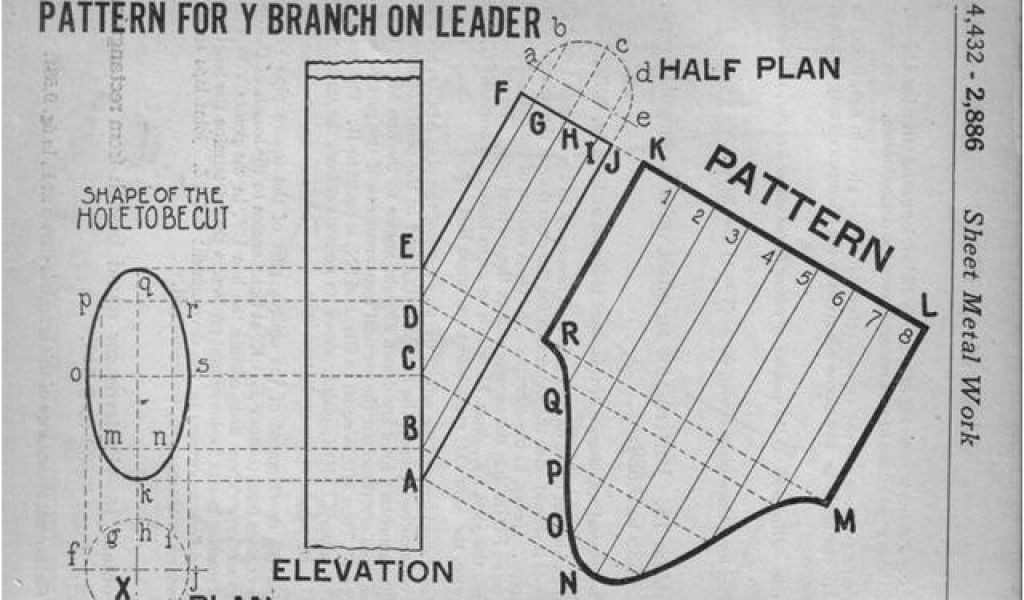The 2 7/8" Pipe Saddle Template That Works Every Time: A Guide to Precise Fabrication
Welding and fabrication professionals know that precision is paramount. When it comes to pipe welding, a perfect saddle cut is the foundation for a strong and reliable joint. For 2 7/8" pipe, achieving a flawless saddle can be tricky. This article delves into the critical details of utilizing a 2 7/8" pipe saddle template, ensuring accurate cuts and consistent results, every single time.
Why Accurate Saddle Cuts Matter
Before diving into the specifics of the template, it’s essential to understand why a precise saddle cut is so crucial. A poorly executed saddle can lead to:
- Weak Joints: Inadequate penetration and fusion weaken the weld, compromising the structural integrity of the pipe.
- Increased Welding Time: Correcting errors takes time, increasing labor costs and project timelines.
- Material Waste: Incorrect cuts can lead to scrapping pipe sections, adding to material expenses.
- Code Violations: In some industries, sloppy welds may not meet required safety standards, potentially leading to costly rework or penalties.
Understanding the 2 7/8" Pipe Saddle Template
The 2 7/8" pipe saddle template is a tool designed to simplify and standardize the process of cutting saddles for intersecting pipes. It acts as a guide, providing the precise shape needed to achieve a perfect fit. These templates are typically made from durable materials like:
- Cardboard: Cost-effective, but less durable for repeated use.
- Plastic: Offers better durability and water resistance.
- Metal: The most robust option, ideal for frequent use and harsh environments.
The template is designed to represent the intersection of the two pipes, ensuring a tight fit and optimal weld preparation.
Using Your 2 7/8" Pipe Saddle Template: A Step-by-Step Guide
Here’s a clear, step-by-step guide to utilizing your 2 7/8" pipe saddle template effectively:
Preparation is Key:
- Clean the Pipe: Remove any rust, dirt, or debris from the pipe surface where the cut will be made.
- Secure the Pipe: Ensure the pipe is securely clamped or held in position to prevent movement during marking and cutting.
- Choose the Correct Template: Verify you have the correct template for the pipe size (2 7/8") and the desired intersection angle (e.g., 90 degrees, 45 degrees).
Positioning the Template:
- Align the Template: Carefully position the template on the pipe, aligning it with the desired intersection point.
- Consider the Angle: Ensure the template is oriented correctly to achieve the required angle of intersection.
Marking the Cut Line:
- Secure the Template: Use tape, clamps, or magnets (if the template is metal) to hold the template firmly in place.
- Trace the Outline: Using a soapstone, marker, or scribe, carefully trace the outline of the template onto the pipe. Ensure a clear and consistent line.
Cutting the Saddle:
- Choose the Right Cutting Method: Select the appropriate cutting method based on your equipment and the pipe material (e.g., band saw, plasma cutter, oxy-acetylene torch).
- Follow the Line: Carefully cut along the marked line, maintaining a consistent cut depth and angle.
- Clean Up: Remove any burrs or sharp edges from the cut using a grinder or deburring tool.
Fitting and Welding:
- Test Fit: Place the cut pipe against the main pipe to ensure a snug fit. Make any necessary adjustments.
- Prepare for Welding: Clean the weld area and position the pipes for welding.
- Weld: Proceed with the welding process, following established welding procedures.
Tips for Optimal Results
- Invest in a Quality Template: A well-made template will provide more accurate results and last longer.
- Practice Makes Perfect: Practice on scrap pipe before working on critical projects.
- Use the Right Tools: Ensure your cutting tools are sharp and in good working condition.
- Double-Check Your Measurements: Always double-check your measurements and template alignment before cutting.
- Consider Pipe Schedule: Be mindful of the pipe schedule (wall thickness) when selecting your template and cutting method. Thicker-walled pipe might require a different approach.
Conclusion: Precision and Efficiency with the Right Tools
Using a 2 7/8" pipe saddle template is a crucial step in achieving high-quality pipe welds. By following the steps outlined in this guide and employing best practices, you can significantly improve the accuracy, efficiency, and overall quality of your welding projects. Investing in a quality template and mastering its use will save you time, materials, and ultimately, ensure the structural integrity of your work.
FAQs
1. What is the best material for a 2 7/8" pipe saddle template?
Metal templates offer the best durability and longevity, especially for frequent use and harsh environments. However, plastic templates are also a good choice for a balance of durability and cost-effectiveness.
2. Can I use a universal pipe saddle template for different pipe sizes?
While some templates offer adjustable features, it’s best to use a dedicated template for the specific pipe size (2 7/8" in this case) to ensure the most accurate fit.
3. What if my saddle cut doesn’t fit perfectly?
If the saddle cut is slightly off, you can use a grinder to make minor adjustments and achieve a better fit. However, significant errors may require re-cutting the saddle or starting over with a new piece of pipe.
4. Where can I purchase a 2 7/8" pipe saddle template?
You can purchase 2 7/8" pipe saddle templates from welding supply stores, online retailers specializing in welding equipment, and some industrial supply companies.
5. Is there a software or app that can generate pipe saddle templates?
Yes, there are various software programs and apps available that can generate pipe saddle templates based on specific pipe sizes, angles, and other parameters. These can be a good option for creating custom templates or for complex pipe configurations.




